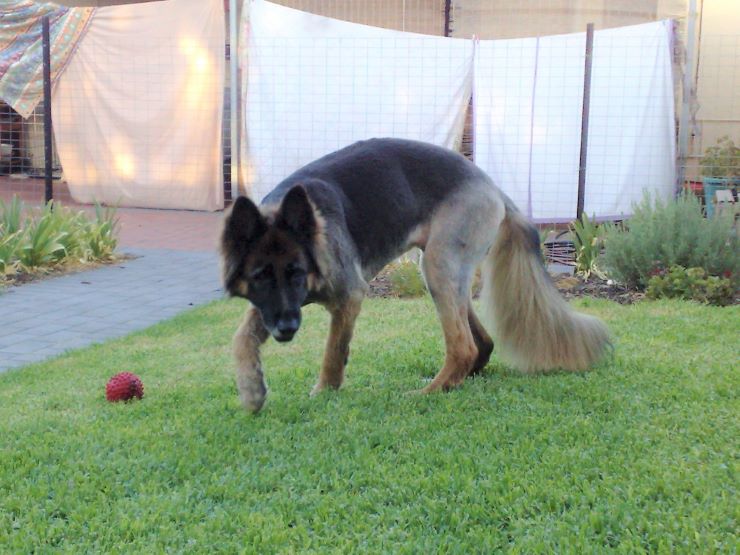If you are a pet parent whose beloved canine is struggling with arthritis you are not alone with millions of others sharing your desire to learn more and find answers for diffusing this potentially debilitating condition. In this article, I will attempt to provide you with a microcapsule of useful information that you can use to halt, and possibly reverse the progression of dog arthritis.
By: Rob Hawkins
![]()

Photo Credit: ccox888/Flickr CC
Arthritis literally translated means inflamed joint but it is much more than that.
Let me take a stab at describing dog arthritis in my normal less than scintillating simplified terms.
Image for a moment you were rubbing your hands together after applying lotion. At first, your hands would slide comfortably until the lotion disappeared. Once the lotion disappeared friction would increase and you would stop. But what if you had to continue? All of a sudden your protective barrier would wear down and pain would follow. You would only avoid this painful destructive fate if the lubricant was long-lasting or there was a way to restore the lubricating protective barrier. This is what happens when dogs become arthritic.
Early Detection is Very Important
It is a generally accepted fact the longer dog arthritis is allowed to go untreated the worse the damage will be and the more difficult it will be to successfully treat the condition. It is also important to point out the there are other causes besides just simple wear and tear (osteoarthritis). For example, a genetic condition known as hip dysplasia along with autoimmune joint conditions such as rheumatoid arthritis are others. But regardless of the cause dog arthritis is still dog arthritis and recognizing the signs are very important, though treatment options will vary depending on the cause. In this article, we are primarily focusing on osteoarthritis in dogs.
Let's look at ten of these:
*Gradual loss of interest in favorite physical activities
*Developing a limp or having one from birth which becomes increasingly severe
*Difficulty getting going especially when cold
*Despondency or depression
*Difficulty running or jumping
*Hesitating or refusing to climb stairs
*Yelping or whining, especially when movement is involved
*A change in personality such as unexplained aggression
*Joints that feel warm or appear swollen
*Difficulty walking
If you start to notice one or more of the above signs a trip to your pet's veterinarian for a complete physical examination is likely the best course of action. But while this is the best course of action you should also be prepared for the bill, with X-rays, blood tests, and a joint fluid analysis likely be required to determine the severity and cause of arthritis.
Prevention and Treatment from a Natural Health Point of View
A solid diet, regular exercise, and supplementation with natural products containing glucosamine and/or chondroitin are excellent building blocks for long-term joint health. If your pet's arthritis is a byproduct of old age, weight reduction and controlled exercise are dog arthritis management steps worth adding to any treatment plan.
Also read:
*Weight reduction: As father time continues his relentless march your dog will likely become less active thus burning fewer calories and resulting in weight gain. While there is no evidence to support the idea that older pets eat more I have observed this phenomenon with my aging dogs. This a sure-fire formula for weight gain and possibly obesity which in turn accelerates wear and tear on already damaged joints. One good idea here is to offer pats, praise, and play instead of giving food as a reward.
*Controlled exercise: This is a tricky one and is a delicate subject worth discussing with your vet. That said, maintain strength and flexibility are important components in the battle against dog arthritis. One good idea here is to implement a hydrotherapy routine. If you have a pool or access to a body of water swimming is a great low impact on therapeutic sport worth considering. If not, some veterinary clinics offer hydrotherapy. If hydrotherapy is not a possibility, or if there is no room in your already stretched budget for special therapies, short, gentle walks are the next best form of exercise for aging dogs.
Rob D. Hawkins is an enthusiastic consumer advocate for natural health and natural living with over 10 years of experience in the field. To learn more about pet health along with important information about safe and effective herbal and homeopathic pet care remedies
We use cookies to offer you a better browsing experience, analyze site traffic, personalize content and ads.